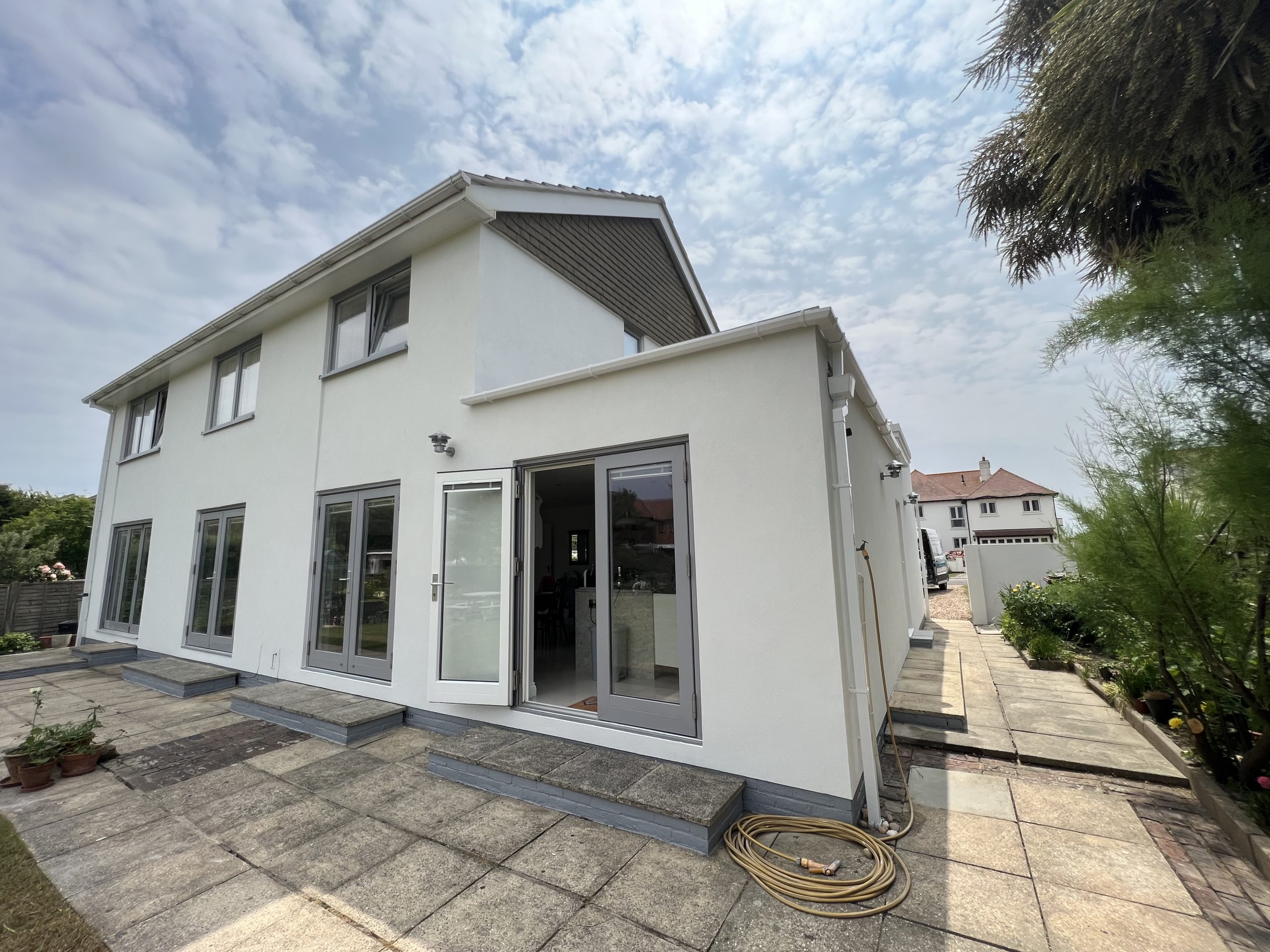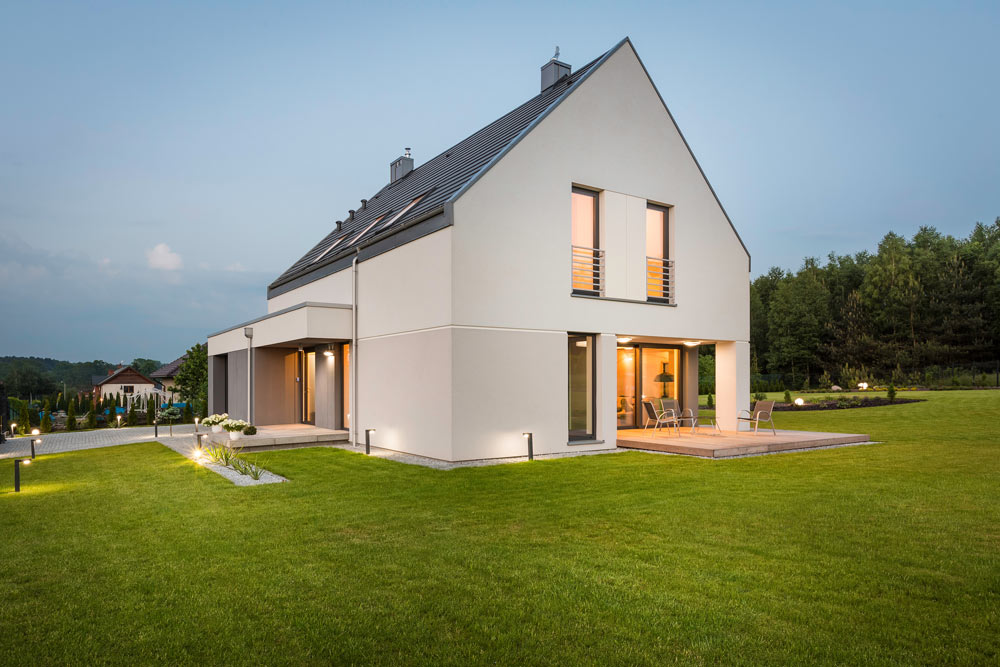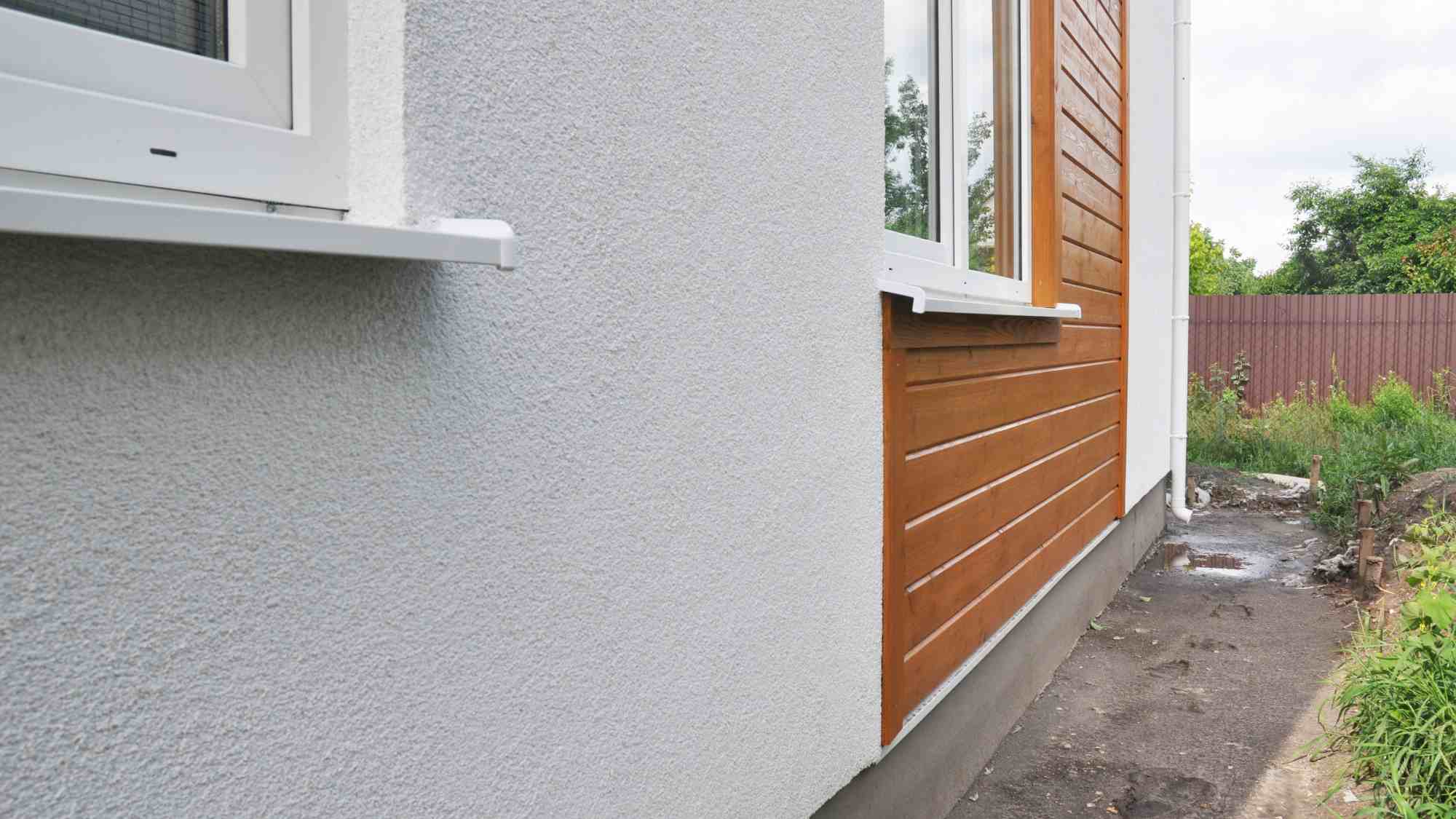

How Silicone Rendering Can Transform Your Property’s Aesthetic
Silicone rendering is not just a trend; it’s a revolutionary approach to modernising the exterior of your home. Its unique properties offer more than just

By reducing heat loss, external wall insulation decreases the amount of energy you need to heat your home. Over time, these energy savings add up, helping to offset the cost of the installation and save you money in the long run.
Inconsistent temperatures can make your home uncomfortable. With external wall insulation, your home's temperature becomes more stable, making for a more comfortable living environment.
Besides the immediate benefits, external wall insulation is a long-term investment. It increases your home's energy efficiency rating, which can make it more attractive to potential buyers and increase its resale value.
By insulating the exterior walls of your home, you can significantly cut down on the amount of energy you use for heating and cooling.
This not only reduces your carbon footprint but also leads to substantial savings on your energy bills. Make a smart, green choice and upgrade to external wall insulation today.




External wall insulation doesn’t just make your home more energy-efficient — external wall insulation also enhances its exterior aesthetics.
With a variety of finishes and textures available, you can choose one that suits your home’s style and increases its curb appeal. Transform your home with external wall insulation and enjoy the combination of functionality and beauty.
Contact us below to discuss our external solid wall insulation services.
External wall insulation is a layer of insulating material applied to the outer walls of a building, reducing heat loss and improving energy efficiency.
The exact savings vary depending on your home’s size and existing insulation, but on average, you could save several hundred pounds a year on energy bills.
Yes, and often for the better! There are a variety of finishes available, so you can choose one that suits your home’s style.
Most properties can benefit from external wall insulation, but we offer a free site visit to assess your property’s suitability.
The installation time varies depending on the size and complexity of the property, but typically, it takes between 2 to 3 weeks.
The primary difference between cavity wall insulation and external wall insulation lies in the type of walls they are designed for and how the insulation is installed.
Cavity wall insulation is specifically designed for homes with cavity walls, which are walls that have two layers with a gap (or cavity) in between. The insulation is installed by filling this cavity with insulating material like foam, beads, or wool. This method is generally less invasive, as it usually involves drilling small holes in the external walls to inject the insulating material. After installation, these holes are filled and sealed, making the process relatively quick and straightforward.
On the other hand, external wall insulation involves applying an insulating layer to the external surface of the walls, followed by a layer of rendering or cladding. This type of insulation is more suited for homes with solid walls or for those where cavity wall insulation is not suitable for some reason. External wall insulation is more visible and can change the appearance of a property, but it is also more comprehensive, often providing better thermal performance.
It’s worth mentioning that external wall insulation is a form of solid wall insulation. Homes with solid walls lack the cavity that would allow for cavity wall insulation, making external or internal options the go-to solutions for insulating such structures.
In summary, cavity wall insulation is a more straightforward option for homes with cavity walls, while external wall insulation is a robust solution often used for homes with solid walls or where cavity wall insulation is not feasible. Both methods have their own set of advantages and disadvantages, and the best choice will depend on the specific needs of your property.
Various types of insulation material can be used for external wall insulation, depending on factors like your budget, the specific requirements of your property, and your environmental considerations. Here are some commonly used materials:
EPS is a lightweight, rigid foam material that offers good thermal insulation properties. It is one of the most commonly used materials for external wall insulation due to its cost-effectiveness and ease of installation.
Also known as rock wool or slag wool, mineral wool is made from natural minerals and offers excellent fire resistance. It also provides good acoustic insulation, making it a multi-functional choice.
This is a closed-cell foam that offers superior thermal performance but is usually more expensive than EPS or mineral wool. It is also more sensitive to moisture, so proper installation is crucial.
Similar to phenolic foam, polyurethane foam offers high thermal performance. It is also lightweight and can adhere well to most surfaces, but it is usually on the more expensive side.
While less common, cork is a natural, renewable material that offers good thermal insulation and is also fire-resistant. It can be a good choice for those looking for an eco-friendly option.
Each of these materials has its own set of pros and cons, including varying levels of thermal conductivity, fire resistance, and cost. It’s essential to consult with professionals to determine which material is best suited for your specific needs and circumstances.
Yes, external wall insulation can significantly make your property more energy-efficient. It acts as a thermal barrier, reducing the amount of heat that escapes from your home in the winter and keeping it cooler in the summer. This leads to less reliance on heating and cooling systems, subsequently reducing your energy bills.
While cavity and loft insulation are common methods to improve a home’s energy efficiency, they may not be sufficient for all types of properties. For instance, homes with solid walls or those where cavity and loft insulation are not suitable can benefit greatly from external wall insulation.
Roof insulation is another crucial aspect of a fully insulated home. Just like cavity and loft insulation, roof insulation helps to reduce heat loss. However, walls are also major points of energy leakage, and roof insulation alone may not be enough to make your home as energy-efficient as possible. Combining roof insulation with external wall insulation can provide a comprehensive solution for improving your property’s energy efficiency.
It’s advisable to consult with insulation services to assess the specific needs of your property. A professional can provide tailored advice on combining different types of insulation, such as external wall, cavity and loft, and roof insulation, to achieve the best results in terms of energy efficiency.
In summary, external wall insulation is a highly effective way to make your property more energy-efficient, particularly when used in conjunction with other types of insulation like cavity and loft insulation and roof insulation.
Cavity wall insulation fills the gap between walls with materials like foam to prevent heat loss. It’s less intrusive, suited for homes with cavity walls, and involves injecting insulation through drilled holes. External wall insulation is fixed onto the wall’s exterior, suitable for solid walls without cavities, and changes the building’s facade with a protective layer that also enhances thermal efficiency.
To determine which insulation service you need, consider your home’s construction. If you have solid walls or your cavity walls are already insulated, external wall insulation (EWI) may be the best choice. External wall insulation is particularly effective, wrapping your home in a thermal layer, cutting heating costs significantly and improving your property’s façade.
While it can be costlier upfront, the long-term energy savings and aesthetic enhancement make EWI a valuable investment for your home’s comfort and value. It’s especially advantageous if internal space is premium or if you’re seeking to simultaneously refurbish the exterior.


Silicone rendering is not just a trend; it’s a revolutionary approach to modernising the exterior of your home. Its unique properties offer more than just


External wall insulation (EWI) stands as a pivotal factor in the modern homeowner’s quest for energy efficiency and financial prudence. In an era where environmental


Amidst the urban sprawl, as the din of daily life grows ever louder, the quest for tranquility within our living spaces becomes paramount. External Wall



ShapeUp Constructions Ltd is renowned for its exceptional track record of successful EWI and silicone rendering projects, showcasing our extensive expertise and knowledge in the field.
The Jubilee Centre 10-12 Lombard Road,
London, England, SW19 3TZ
Managed by Eighteen